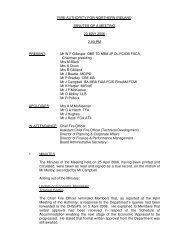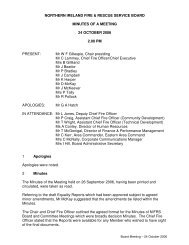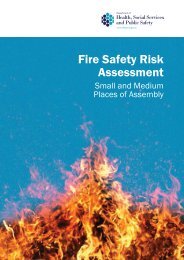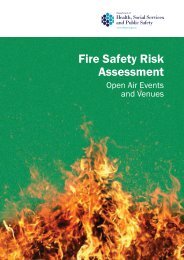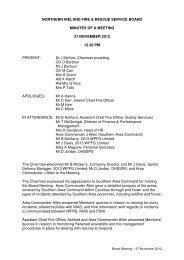A Guide To Reducing The Number Of False alarms From fire
A Guide To Reducing The Number Of False alarms From fire
A Guide To Reducing The Number Of False alarms From fire
You also want an ePaper? Increase the reach of your titles
YUMPU automatically turns print PDFs into web optimized ePapers that Google loves.
If your alarm system automatically alerts an alarm receiving centre (an ARC),contact the ARC straight away. Tell them you are having problems with yoursystem and agree how they should handle any further <strong>alarms</strong> (to avoidneedlessly calling out the <strong>fire</strong> and rescue service) until the problem hasbeen fixed.Effective, regular maintenance, including cleaning the inside and outside ofsmoke detectors, will help to prevent equipment faults from happening inthe first place.Malicious actsThis cause can be the most difficult to identify and often needs to beinvestigated carefully. Examples of malicious acts include:• unnecessarily breaking the glass in break glass boxes;• unauthorised people having and using test keys for break glassboxes; and• deliberately directing smoke (for example, from a cigarette) into asmoke detector.Human errorsExamples of human errors include the following.• Building contractors carrying out hot or dusty work close to smokedetectors or heat detectors.• <strong>The</strong> <strong>fire</strong>-alarm system not being switched off while its wiring is being altered.Note: If you are planning on making changes to your <strong>fire</strong>-detection and<strong>fire</strong>-alarm system, consult your local <strong>fire</strong> and rescue service to find outif the changes would affect any <strong>fire</strong>-safety arrangements in the building.Also consider how the changes could affect the other <strong>fire</strong> precautionsin your building.11




